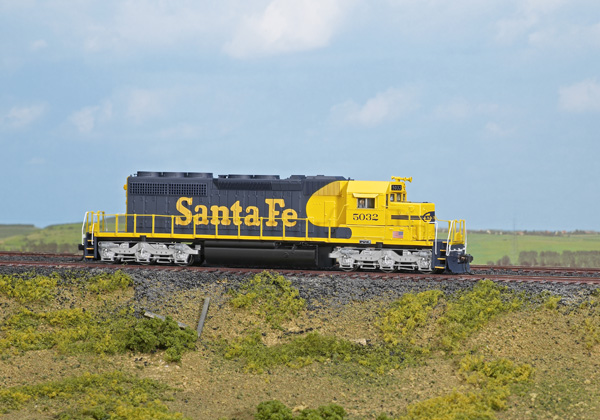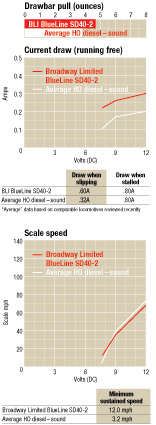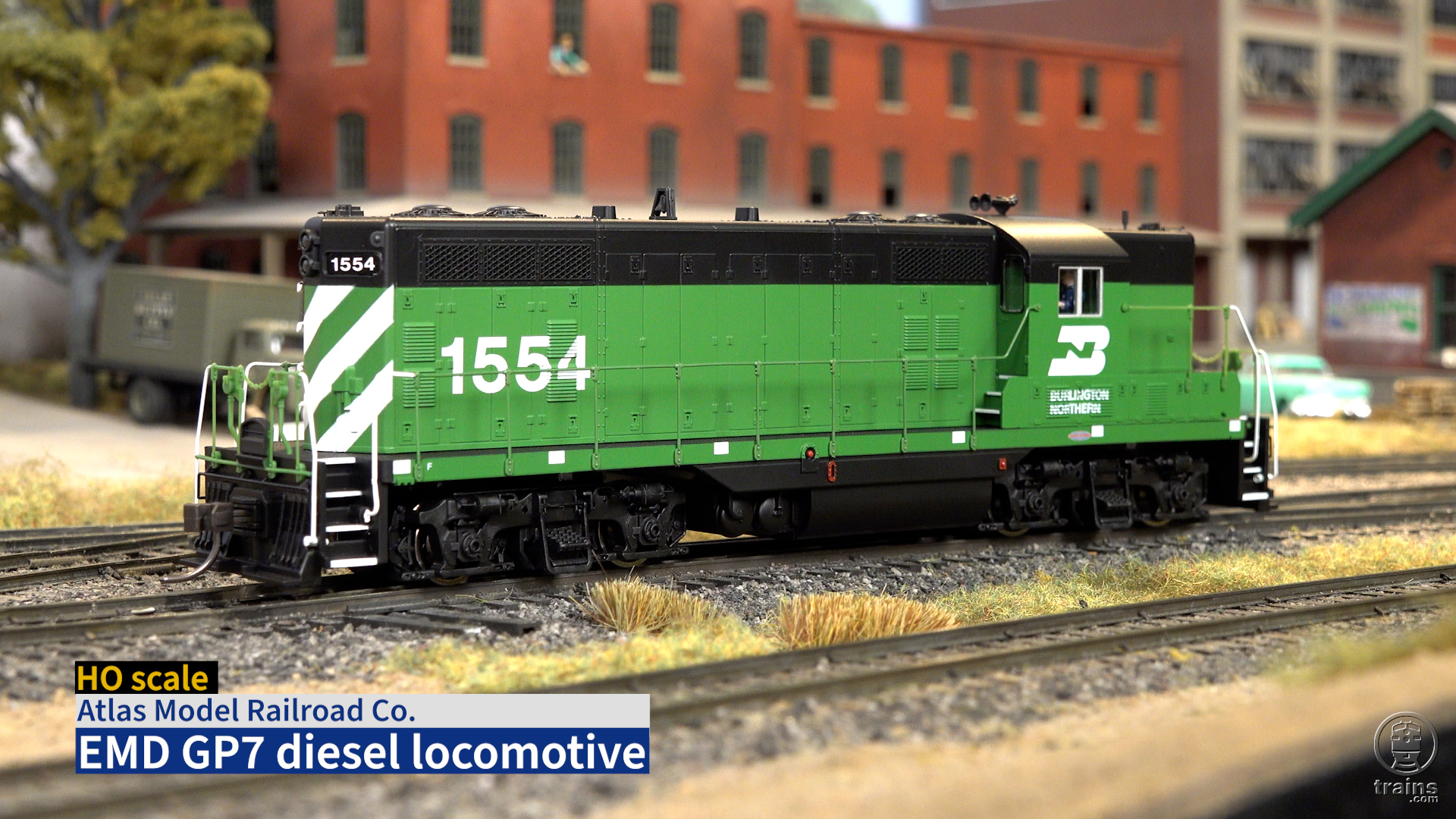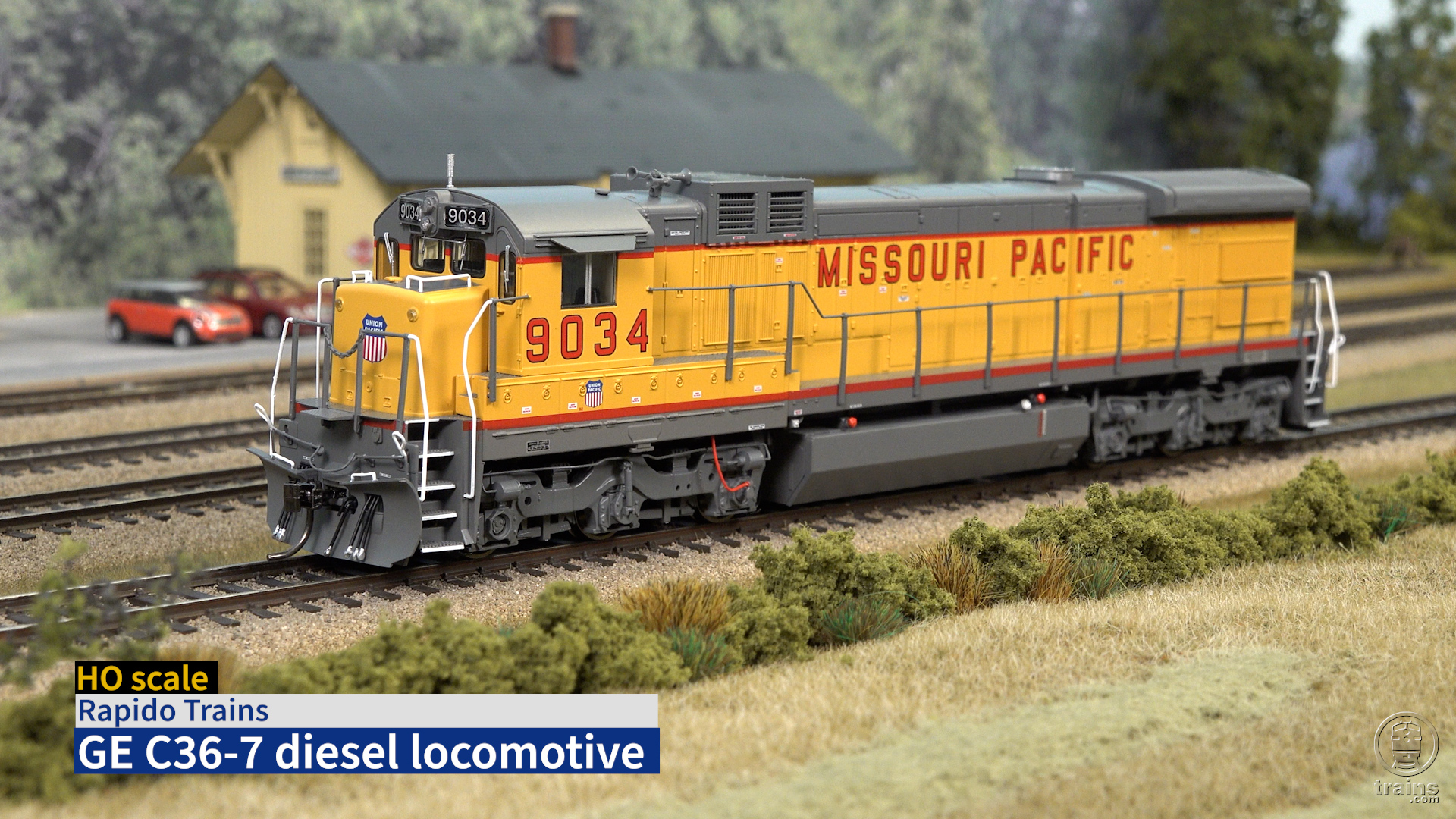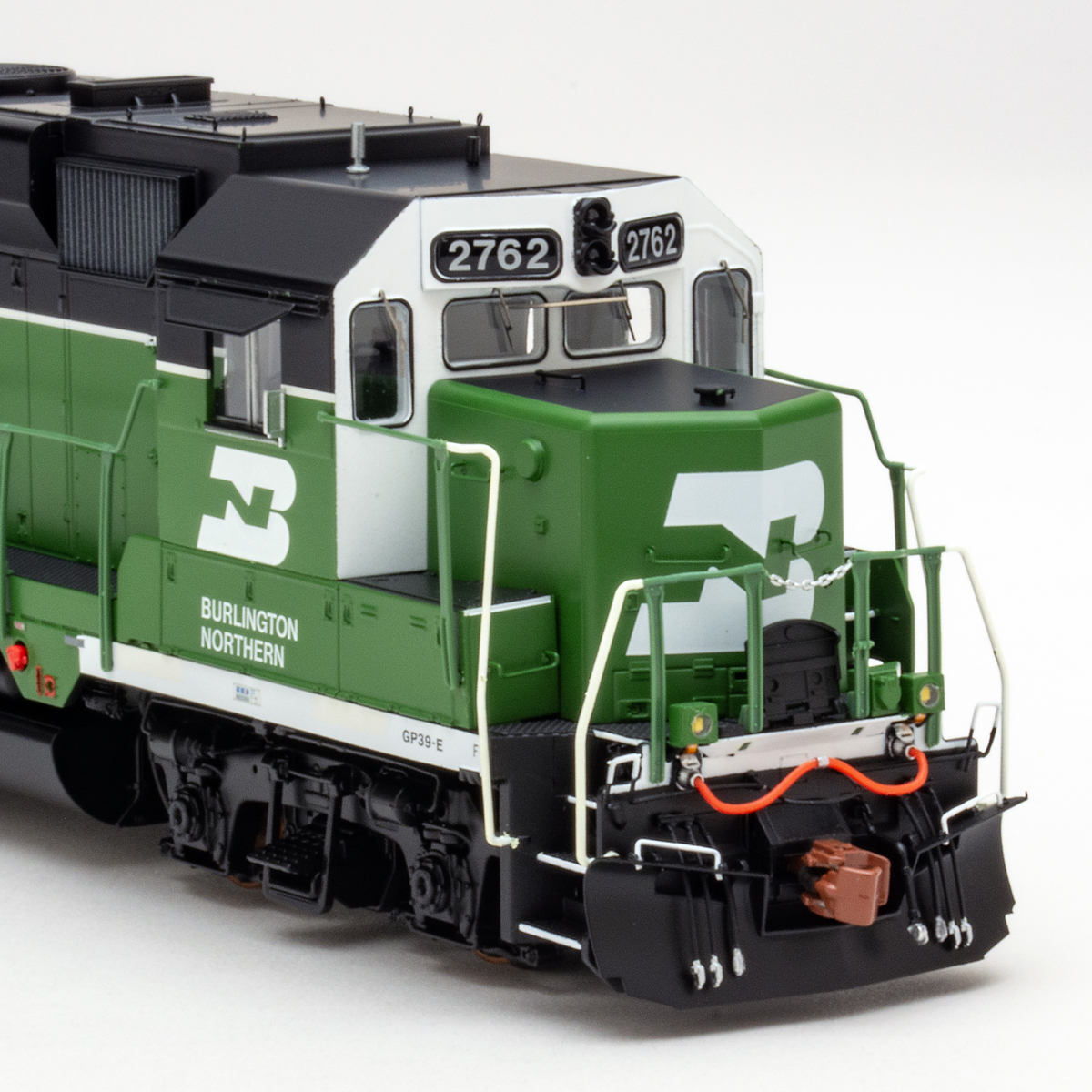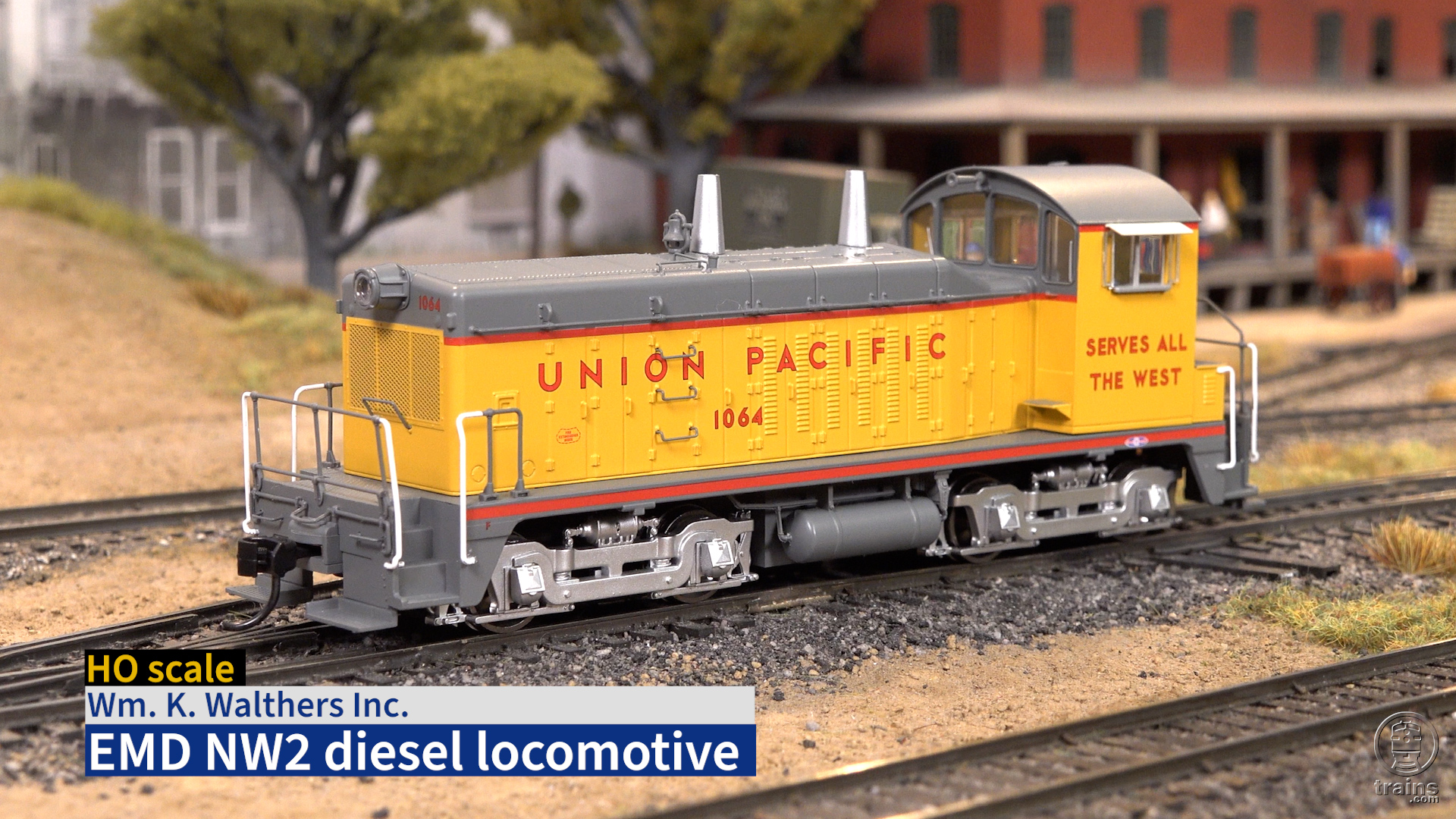The BlueLine model matches photos of a standard version as-delivered by EMD. The BlueLine SD40-2 is within scale inches of prototype drawings in the Model Railroader Cyclopedia Volume 2: Diesel Locomotives. [Currently out of print. – Ed.]
Price: $169.99
Manufacturer
Broadway Limited Imports
4 Signal Ave., Ste. C
Ormond Beach, FL 32174
Description: Ready-to-run plastic and metal HO diesel
Road names: (Two road numbers each) Atchison, Topeka & Santa Fe; Baltimore & Ohio (Chessie System); Burlington Northern Santa Fe; Canadian National (sublettered Grand Trunk Western); Florida East Coast; Milwaukee Road; Norfolk Southern; Union Pacific; undecorated
Our sample came decorated as Atchison, Topeka & Santa Fe no. 5032, which was one of an order for 172 SD40-2s delivered to the railroad between 1977 and 1981. Most of the model’s livery matched prototype photos except for its white end handrails and uncoupling levers. These parts are yellow on the prototype.
Overall paint coverage is smooth, and the lettering is crisp and opaque. EMD builder’s plates are printed neatly on the sides of the frame.
The American flag on the fireman’s side has a rectangular shadow in the upper right corner of the stripes. It appears as if this flag was originally printed facing the opposite direction, then was later covered with a flag facing its current correct position.
The HTC trucks are painted silver, but the separately applied brake cylinders are gray unpainted plastic. These should be painted silver to match the prototype. A BLI representative said that they hoped to correct this for the rest of the production run.
An additional die-cast metal weight fits over the motor and has the printed-circuit board mounted to it. Unlike the dual-speaker-equipped DCC version, the BlueLine SD40-2 features a single speaker mounted vertically behind the weight over the rear truck.
The BlueLine SD40-2 is designed for easy conversion to DCC. After removing the body shell, I unplugged the smaller control board from the main sound board, revealing an NMRA-recommended 8-pin decoder socket. I installed an NCE N14IP decoder into our sample, and the SD40-2’s functions all operated correctly.
In DC, the model’s starting speed was a bit high at 12 scale miles per hour. However, the BlueLine SD40-2’s top speed of 68 mph at 12 volts is a near perfect match to one of the prototype’s common gear ratios.
After I installed the DCC decoder and set the speed control to 28 steps, the SD40-2’s starting speed was 8 mph. The model accelerated linearly to a top speed of 79 mph in step 28.
I ran the BlueLine SD40-2 through an 18″ curve of Atlas track without any difficulty. The model’s sound system remained constant as it pulled and then pushed a short freight train of 40-foot boxcars through an Atlas no. 6 turnout.
The model has great pulling power. The SD40-2 can haul the equivalent of 65 HO scale freight cars on straight and level track.
All-wheel electrical pickup
Blackened metal RP-25 contour wheels (mounted in gauge)
Die-cast metal frame tank
Drawbar pull: 4.7 ounces
Factory-installed sound system
Can motor with dual flywheels
Magnetic knuckle couplers (mounted at the correct height)
Minimum radius: 18″
NMRA recommended 8-pin DCC socket
Weight: 1 pound 4 ounces
The DCMaster has bell and horn buttons, allowing the user to trigger these features on the model. I especially enjoyed the realistic horn on the model, which plays both short and long blasts depending on how long you hold down the button. The DCMaster’s “AUX” button controls two additional factory-programmed sounds – an air compressor when the locomotive is stopped and the dynamic brake blower when it’s underway.
The DCMaster also allows you to set many of the BlueLine model’s configuration variables (CVs) without a DCC system. I could adjust volume levels of different sound features as well as make the rate of the mechanical bell faster or slower. By changing CV 222 to a value of 1, I made the AUX button trigger a coupler crash sound instead of its factory defaults.
Other programmable features include setting the locomotive’s position in a multi-unit consist, which automatically adjusts lighting and sound to match.
Despite some painting quirks, the BlueLine SD40-2 is a solid performer. Ready to run and upgradable to DCC, the model is a great way to expand your sound-equipped diesel roster.





